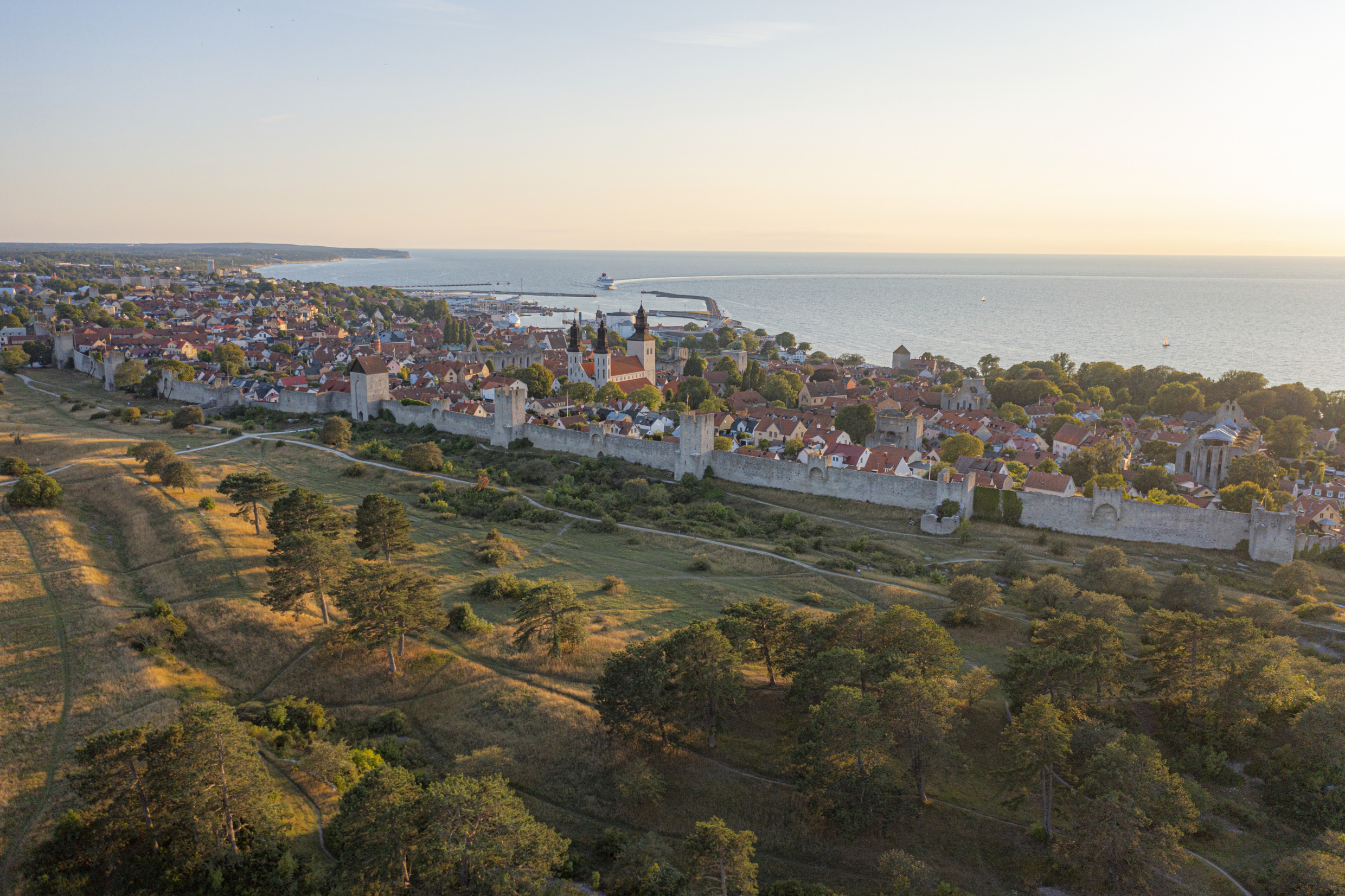
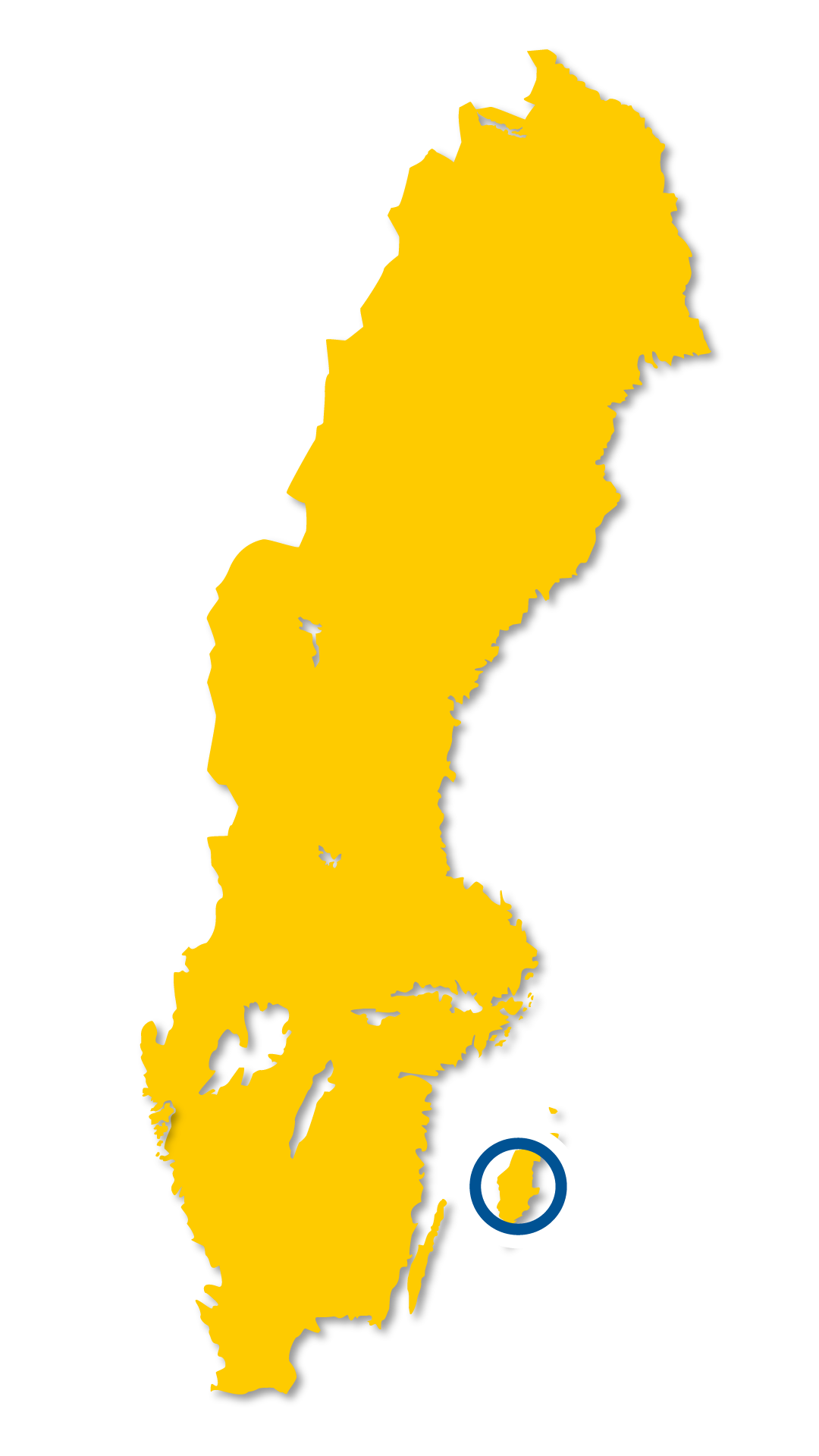
Gotland – where Viking-era history meets unique natural scenery
Gotland is a paradise island with characterful wilderness and a coastline punctuated with sandy beaches and sculptural sea stacks. Historically significant, its main town Visby is a Viking-era wonder and UNESCO World Heritage Site.
Anyone who’s set foot on Gotland soil would agree there’s something magical about it. This unique island off the southeast coast of Sweden has it all – natural scenery, remarkable history and unique local flavours.
Wander around the cobbled streets of Visby – the main town on the island’s east coast – and it’s as though you’ve been transported to medieval times. The quaintness of the residential streets of Visby, with their idyllic cottages and characteristic abundance of sweet-smelling roses, contribute to the town’s unique charm. However, there’s also much to discover beyond the city’s borders.
Known as a foodie hotspot, Gotland is benefiting from the wonderful local produce available on the island – not least freshly caught seafood – and it has a significant craft brewery scene too.
It’s well worth a visit any time of year – every season has its unique charm – but the island comes alive particularly during summer when temperatures hover around the 20°C mark, and the waters are at their most bathing-friendly. Even if swimming is not on the agenda, Gotland’s distinctive coastline has much to offer. The sea stacks – or ‘raukar’ as they’re called in Swedish – found on the rocky east coast are an almost otherworldly sight to behold.
Fiskargränd, Visby
The picturesque alley of Fiskargränd is one of the most photographed streets of Visby.
Photo: Tina Axelsson/imagebank.sweden.se

Fiskargränd, Visby
Photo: Tina Axelsson/imagebank.sweden.se

The Visby City Wall
Photo: Emelie Asplund/imagebank.sweden.se

St Karin church ruin, Gotland
Photo: Sofia Cassis/Region Gotland

The Gotland Museum
Photo: Gotlands Museum

The Cherry Garden, Gotland
Photo: Körsbärsgården
Discover Gotland’s cultural heritage
In 1995, Visby entered the list of UNESCO World Heritage Sites, and for good reason – Visby is the best-preserved fortified trading town in northern Europe. Between the 12th and 14th centuries, it was the main centre of the Hanseatic League in the Baltic.
Visby’s historic townscape features a high number of significant architectural buildings and structures dating back to the 13th century. Wrapping around the centuries-old centre, 'ringmuren' (The Visby City Wall) – complete with towers and gates – was built between 1250 and 1288 and stretches across 3.5 kilometres.
Visit our Visby destination page for more travel tips.
For Viking enthusiasts, Gotland is something extra. The island is dotted with burial grounds from the Viking Era, such as a 15-hectare site in Stenkyrka with some 1,000 graves. The Gotland Museum’s Fornsalen in Visby boasts Viking Age silver hoards and at Stavgard Vikingagård, a reconstructed Viking village, you can experience a day in the life of a Viking.
If you’re into modern culture, make sure to stop by Körsbärsgården (The Cherry Garden) in Storsudret. This award-winning centre for art and architecture includes a contemporary art hall, a sculpture park and a café that has been a cultural hotspot for decades.
As you travel through the island, you’ll most likely come across handwritten signs along the roads saying “Loppis”. Gotland is full of flea markets and for the bargain-hungry, there are plenty of opportunities to scout around for pre-loved furniture, clothing and trinkets.

When to visit Gotland?
- Spring: While the crowds haven’t arrived yet, the flora is coming back to life. Expect yellow rapeseed fields, pink cherry blossoms and green ivy forests – Gotland in spring is a rainbow of colours.
- Summer: Peak season with many visitors and a range of major events all over the island. All restaurants, hotels and small farm shops are open, and the beaches are buzzing with life.
- Autumn: Many locals describe this as the best season. The ocean is still warm and the climate is mild, the crowds are gone and many restaurants and hotels are still open on weekends.
- Winter: Visby in the winter is a completely different experience with its Christmas markets and tranquil atmosphere. While it can be quite windy outside the city walls, Visby turns into a fairy tale town if you’re lucky to visit during a snowfall.
Biking on Gotland
Gotland is a cyclist’s dream destination as it's mostly flat and with many dedicated cycling paths.
Photo: gotland.com

Biking on Gotland
Photo: gotland.com

Sea stack field, Gotland
Photo: Helena Wahlman/imagebank.sweden.se

Tofta Beach, Gotland
Photo: Sofia Cassis/Region Gotland

Lergravsporten, Gotland
Photo: Sofia Cassis/Region Gotland

Klintkustleden, Gotland
Photo: Sofia Cassis/Region Gotland
Explore the natural wonders of Gotland
Gotland has amazing natural scenery and more than 100 nature reserves. Whether you’re into enchanting ivy forests, sandy beaches or barren sea stack fields, this island has something for everyone.
Sea stacks or ‘raukar’ as they’re called in Swedish, are limestone monoliths created by natural erosion during the last Ice Age. They are a common sight on the island, and the most famous ones have been given names. If you’re opting for a sea stack safari, make sure to tick off Lergravsporten and Hoburgsgubben, or head to Fårö where even more impressive sea stacks fields await.
Since Gotland is mostly flat, it is a cyclist’s dream destination. The Eksta coast is a popular biking option with much to offer. Set within an idyllic nature reserve, this coastal stretch runs across the western side of the island, from the fishing village of Djupvik to Hammarudden.
Hiking is a popular outdoor activity on Gotland, too. Östkustenleden is a 78-kilometre-long hiking trail through eight parishes and eight nature reserves from Anga to Närsholm, while the 30-kilometre-long Klintkustleden stretches between Björkume and Hallshuk with cliffs, wetlands and old fishing villages along the way. It’s also possible to do a pilgrimage from Roma Kungsträdgård to Dalhem – a 7-kilometre-long pilgrim trail accessible year-round. Read more about outdoor activities on gotland.com.
Should you long for a refreshing swim or a relaxing day of sunbathing, the options are many – from water-filled limestone quarries to inland lakes and mile-long beaches. In general, the northwest coast consists of rocky beaches and the southeast coast of sandy beaches. For families with small children, there are plenty of shallow beaches to choose from – Tofta, Nisseviken and Sudersand to name a few. Or do as the locals and set off on a bike tour or road trip to find your own hidden gem.
Digerhuvud, Fårö
Enjoying the sea view from a beach at Digerhuvud on the island of Fårö. The island is known for its dramatic nature, with sea stacks scattered along the coast.
Photo: Lucas Günther/imagebank.sweden.se
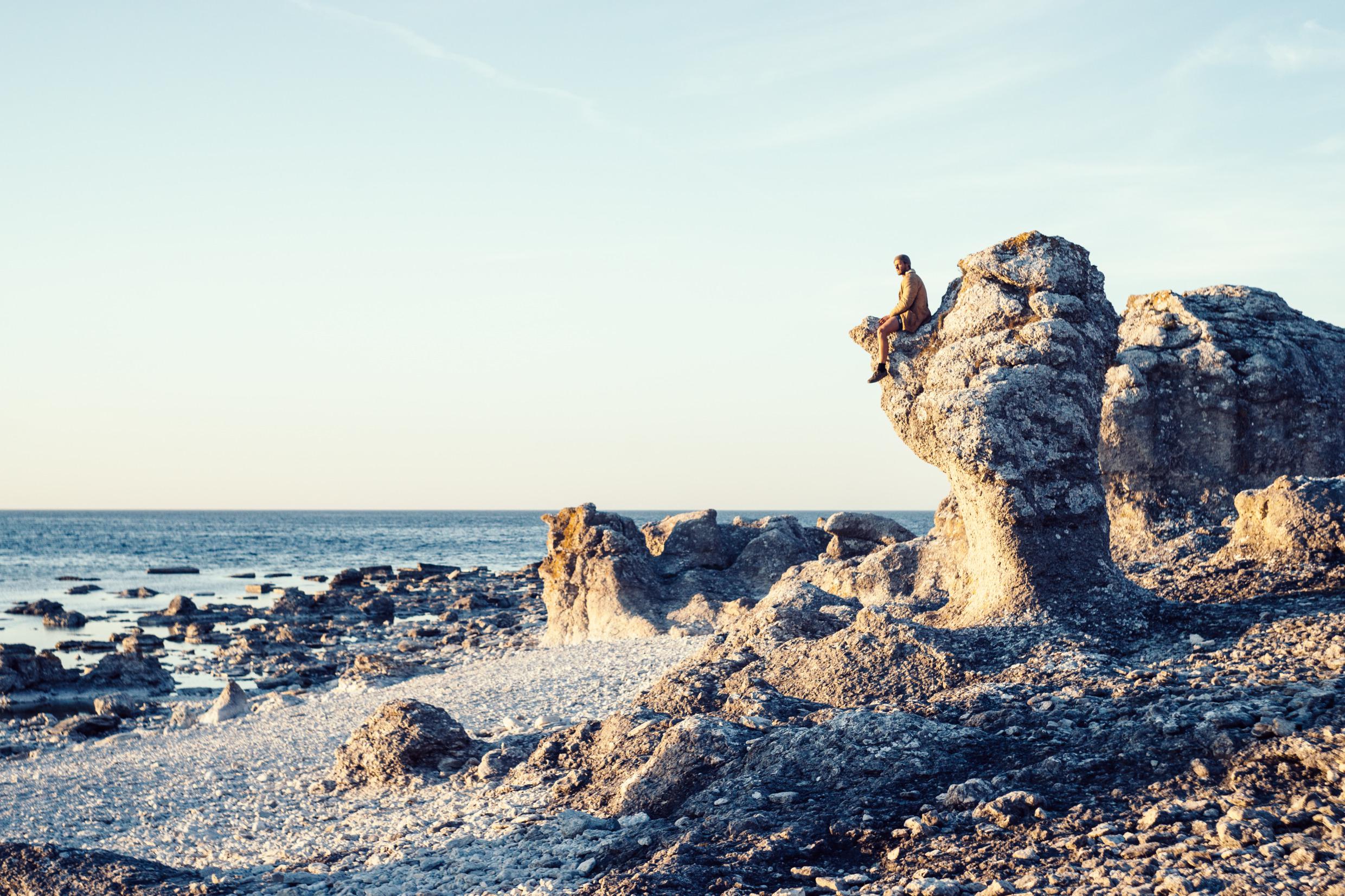
Digerhuvud, Fårö
Photo: Lucas Günther/imagebank.sweden.se

Sea stack field, Fårö
Photo: Jerker Andersson/imagebank.sweden.se

Stora Karlsö, Gotland
Photo: Stora Karlsö

Stora Karlsö
Photo: Stora Karlsö
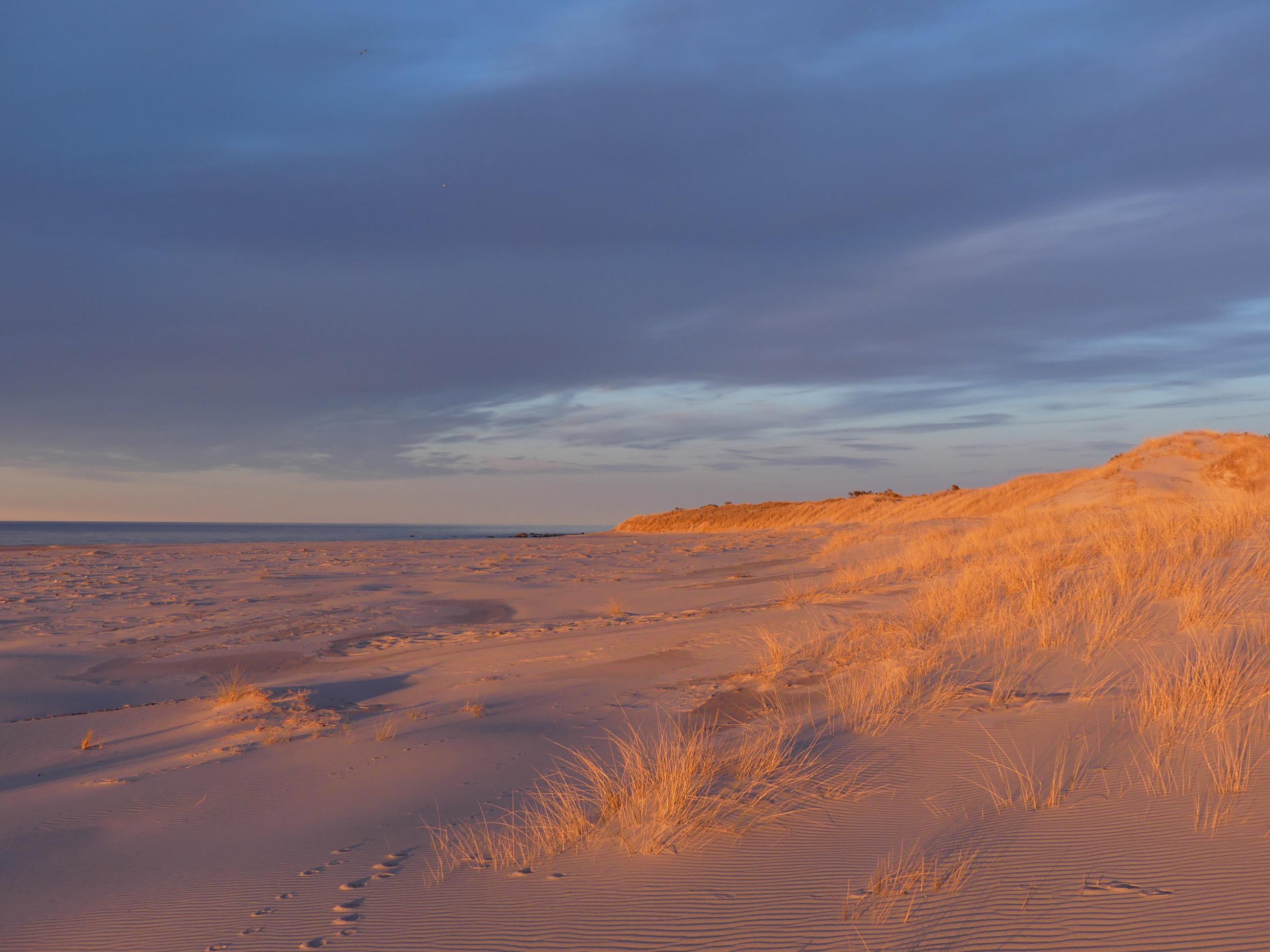
Gotska Sandön
Photo: Mattias Vejlens

Pine forest, Gotska Sandön
Photo: Magnus Lepschi
3 other islands to visit when on Gotland
Fårö
No trip to Gotland is complete without a visit to Fårö. Located just northeast of the main island, you'll reach this characterful destination with a free 6-minute ferry ride from Fårösund. Fårö is formed entirely from limestone rock and is the site of some impressive 'raukar' (limestone sea stacks). Though it has a distinctively rugged beauty in parts, it also boasts sandy beaches, fields and meadows. It's easy to see why world-famous Swedish director Ingmar Bergman fell in love with this island, where he spent much of his life from the 1960s until his death in 2007.
Stora Karlsö
A 30-minute boat ride southwest from Klintehamn, Stora Karlsö and its smaller neighbouring island Lilla Karlsö, are known for their rich flora and fauna. During the summer months, you can watch newborn guillemot chicks jump from Stora Karlsö's characteristic steep cliffs on their first flight. The island is composed of fossilised coral reefs surrounded by limestone and has more than 20 caves. In short, a birdwatcher's paradise and the second oldest nature reserve in the world.
Gotska Sandön
Gotska Sandön National Park is the most isolated island in the Baltic Sea, located some 40 kilometres north of Fårö. It's reachable by boat from Fårösund on northern Gotland and Nynäshamn on mainland Sweden between May and September. The island is uninhabited and consists of mile-long sandy beaches and deep pine forests, constantly reshaped by the wind and the waves. Natural beauty at its purest.
Summer meal
A summer dish consisting of Swedish asparagus, salad and a lamb skewer. Lamb meat is a quintessential Gotland product.
Photo: Fredrik Larsson/imagebank.sweden.se

Summer meal
Photo: Fredrik Larsson/imagebank.sweden.se

Saffron pancake
Photo: gotland.com
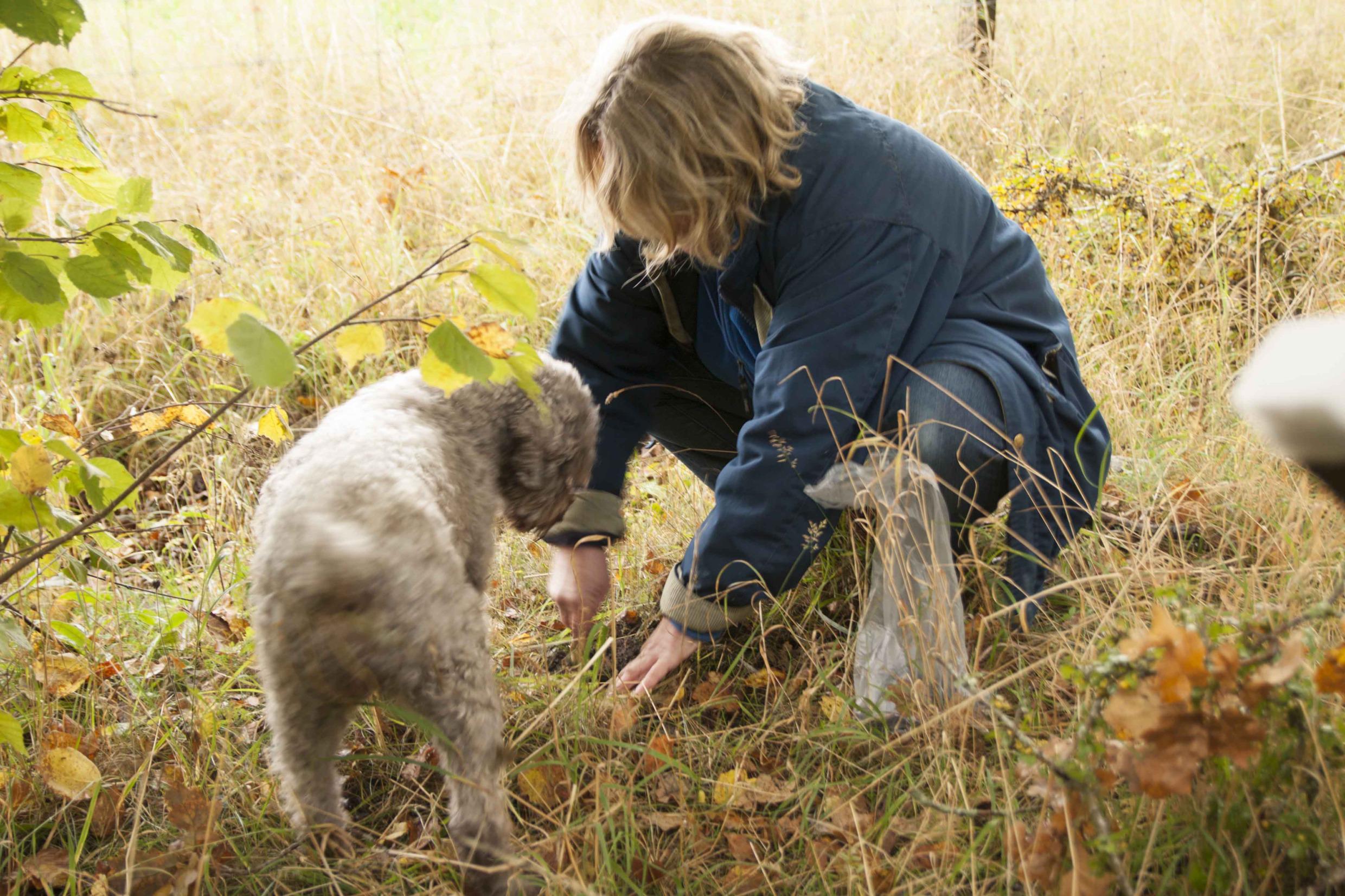
Truffle hunting
Photo: Region Gotland

Truffle, Gotland's "Black Gold"
Photo: Region Gotland

Gotlands Bryggeri, Visby
Photo: Gotlands Bryggeri
The unique flavours of Gotland’s food and beverages
Gotland’s food scene is an innovative mix of tradition and sustainability. The island's privileged history as a trading post has seen it develop a fondness for ingredients from faraway lands – saffron being one example. ‘Saffranspannkaka’ (saffron pancake, based on rice) served with whipped cream and jam made from dewberry – a blackberry relative also known as 'salmbär' – is a must-try Gotlandic classic.
Due to its strong fishing traditions, seafood of all kinds is naturally key, while meat-eaters should take the opportunity to try the local lamb. The rearing of sheep dates back to the Viking era, and the meat is known for its texture and flavour. Lamb meat (and wool) are the quintessential Gotland products, and the island’s flag even features a sheep front and centre.
'Ramslök' (wild garlic) and asparagus – white, green and purple – thrive on Gotland and so does truffle. The kind you’ll find here is unique to the island. Simply called Gotlandic truffle (black Bourgogne truffle), this regional delicacy has its dedicated festival, held annually in November. During this weekend-long event, you’ll get to immerse yourself in the world of truffles. Enjoy a well-balanced medley of activities, from truffle markets and events such as truffle hunts to workshops and seminars held by experts in the field. A wide range of participating restaurants offers the opportunity to try truffles cooked in a variety of ways – from casual affairs to fine dining options.
Another notable food event is the annual Gotland Taste Festival, taking place 26–28 September. Local producers, chefs and food artisans come together for a weekend of tastings at restaurants and farm shops, engaging talks, and a vibrant food market – complete with a ‘drink ruin’ in central Visby.
As for drinks, the local 'Gotlandsdricka' – a smoky-sweet, juniper-flavoured traditional ale – has been made on the island for centuries. Locally brewed beer of other types is never out of reach. Gotlands Bryggeri is a well-established brewery offering up a long list of beer varieties across the island’s bars and restaurants. You’ll also find plenty of micro-breweries – look out for Barlingbo, Hop Shed Brewery and Snausarve Gårdsbryggeri, to name a few. Also worth mentioning are the flavoured spirits from Boge Bränneri and the gin of Gotland Spirits and Hellström. If you prefer wines, book a guided tour around Långmyre Vineri’s vineyard where you also get to taste some of their frequently sold-out wines.
Lilla Bjers, Gotland
Enjoy locally produced food from sustainable farming at Lilla Bjers on Gotland.
Photo: Lilla Bjers

Lilla Bjers, Gotland
Photo: Lilla Bjers
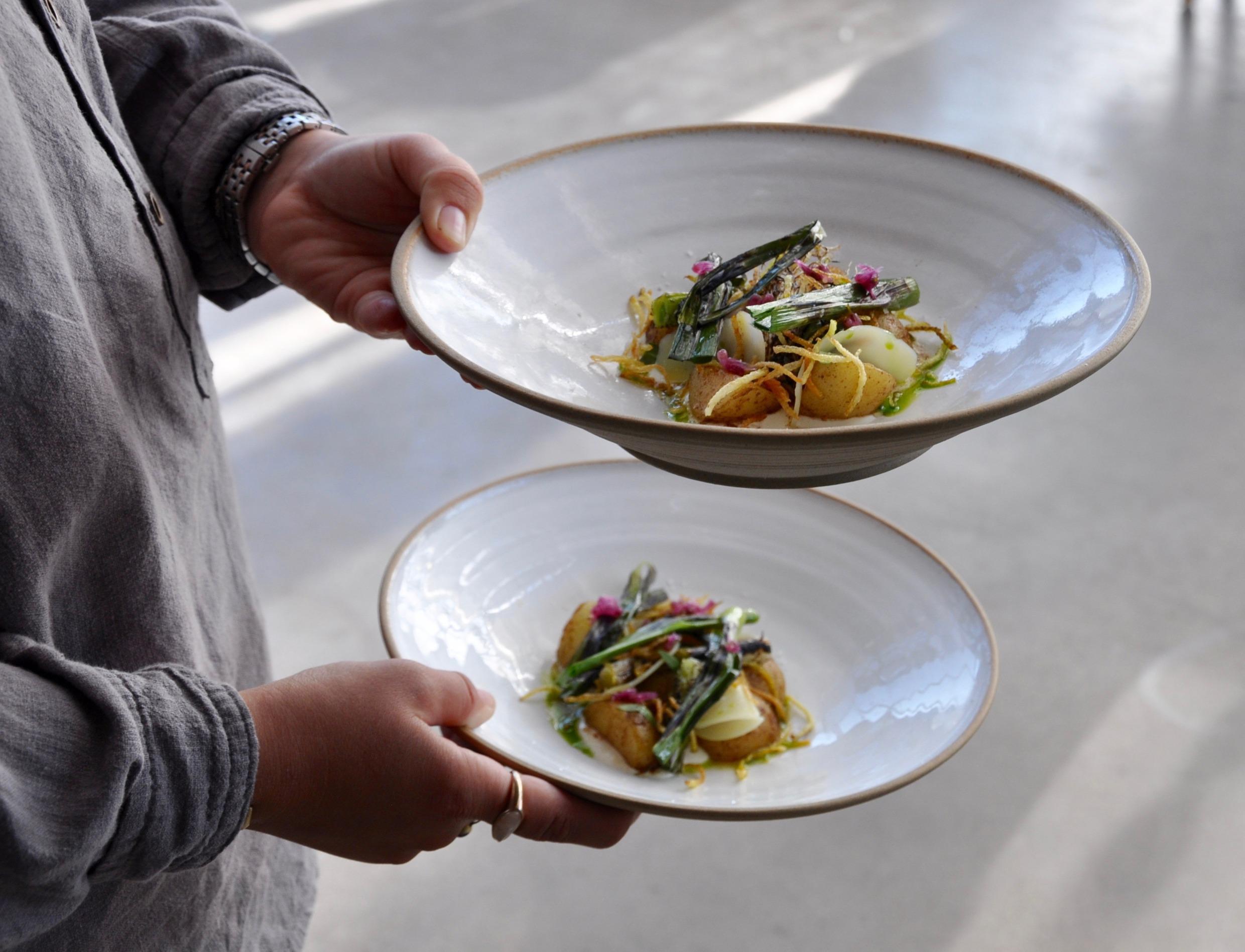
Food served at Lilla Bjers, Gotland
Photo: Margareta Hoas / Lilla Bjers

Krakas Krog, Gotland
Photo: Beatrice Lundborg/Krakas Krog

Krysmyntagården, Gotland
Photo: Gotlandspecialisten AB
Gotland’s top restaurants
Among Gotland’s many great restaurants, make sure to visit Lilla Bjers, situated about 7 kilometres south of Visby. They serve up vegetables exclusively harvested from the restaurant’s organic farm, while meat and dairy are sourced via small-scale producers on the island. The menu interprets the classic flavours of Gotland – like truffles and saffron – in innovative ways. Lilla Bjers was named Best Organic Restaurant in the European Organic Awards 2022.
Krakas Krog is another eminent option, located in east Gotland’s Kräklingbo. Dishes are cooked with seasonal, local produce and meats sourced from nearby farmers and the restaurant’s garden. They also serve fine local wines, and non-alcoholic beverages including Krakas’ apple must (a flavourful, unfiltered apple juice). This renowned restaurant is featured in the prestigious Michelin Guide.
At Katthammarsviks Rökeri on the east coast, you can create your own plate of piping fresh delicacies from the sea. This family-owned smokehouse, complete with a restaurant and shop, offers freshly caught seafood year-round.
Krusmyntagården, just north of Visby, is a popular restaurant in an idyllic setting overlooking the sea. Stroll through the herb garden and buy your favourite spices to take home. In the neighbourhood is also Salthamn, attracting visitors with their wild dining concept and cooking classes.
For food and drink tips in Visby, visit our Visby destination page.
Attempting to summarise Gotland is not an easy feat – it’s truly an island that must be experienced first-hand with all it has to offer.
Practical information before your trip to Gotland
Hotel room at Fabriken Furillen, Gotland
Fabriken Furillen is a hotel and restaurant located in a former limestone factory on the island of Gotland, offering an excellent design experience in a dramatic environment.
Photo: Fabriken Furillen Hotel & Restaurant

Hotel room at Fabriken Furillen, Gotland
Photo: Fabriken Furillen Hotel & Restaurant

Surflogiet, Gotland
Photo: Surflogiet
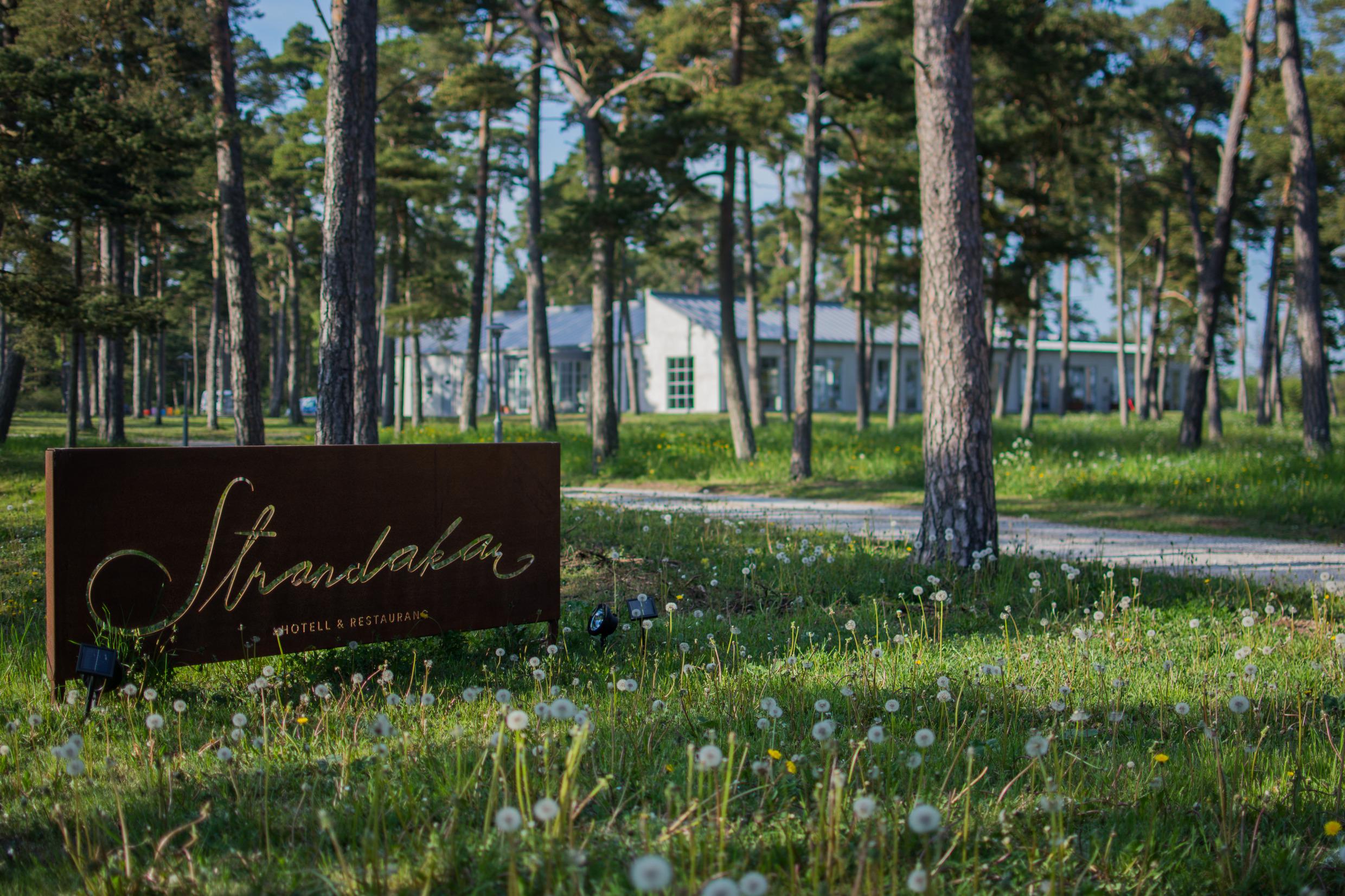
Hotel Strandakar on Gotland
Photo: Anton Blomberg/Blomberg media

Grå Gåsen, Gotland
Photo: Grå Gåsen

Kneippbyn Resort, Gotland
Photo: Kneippbyn Resort

